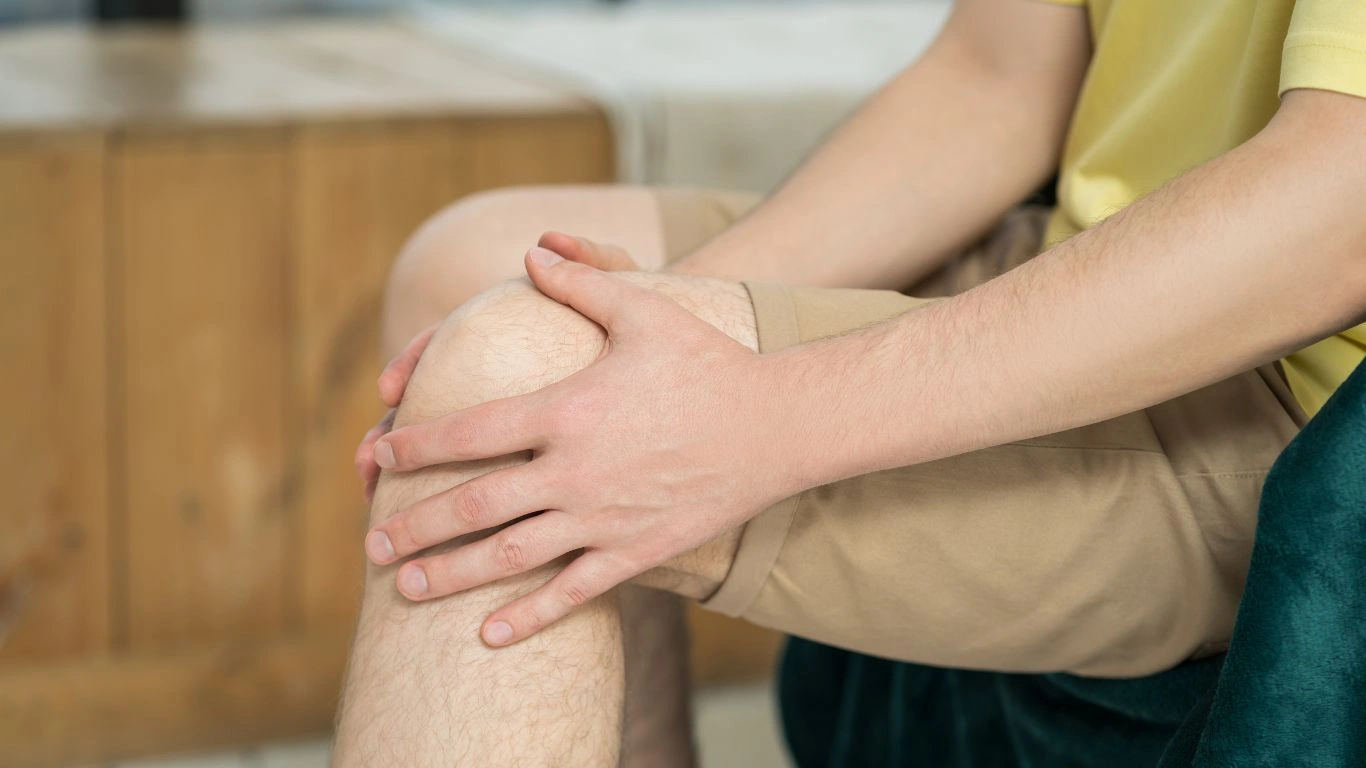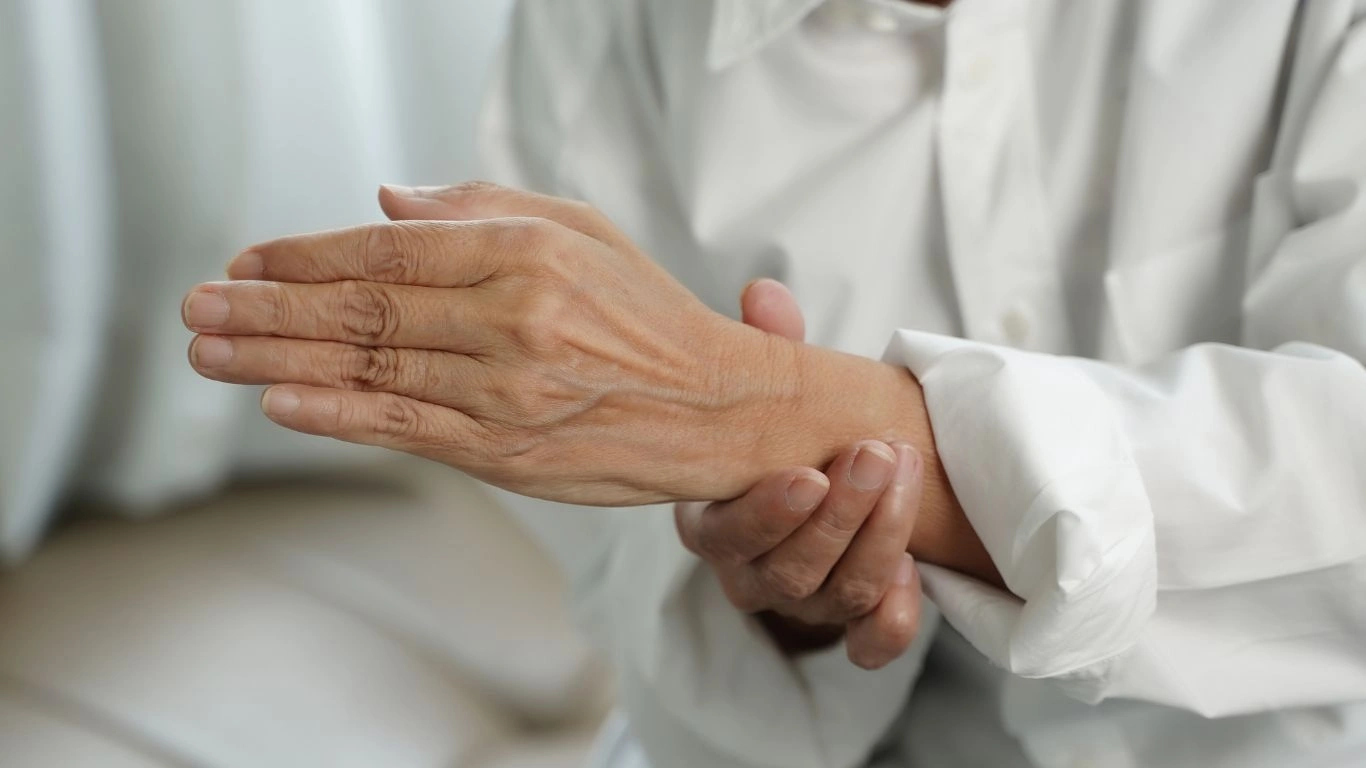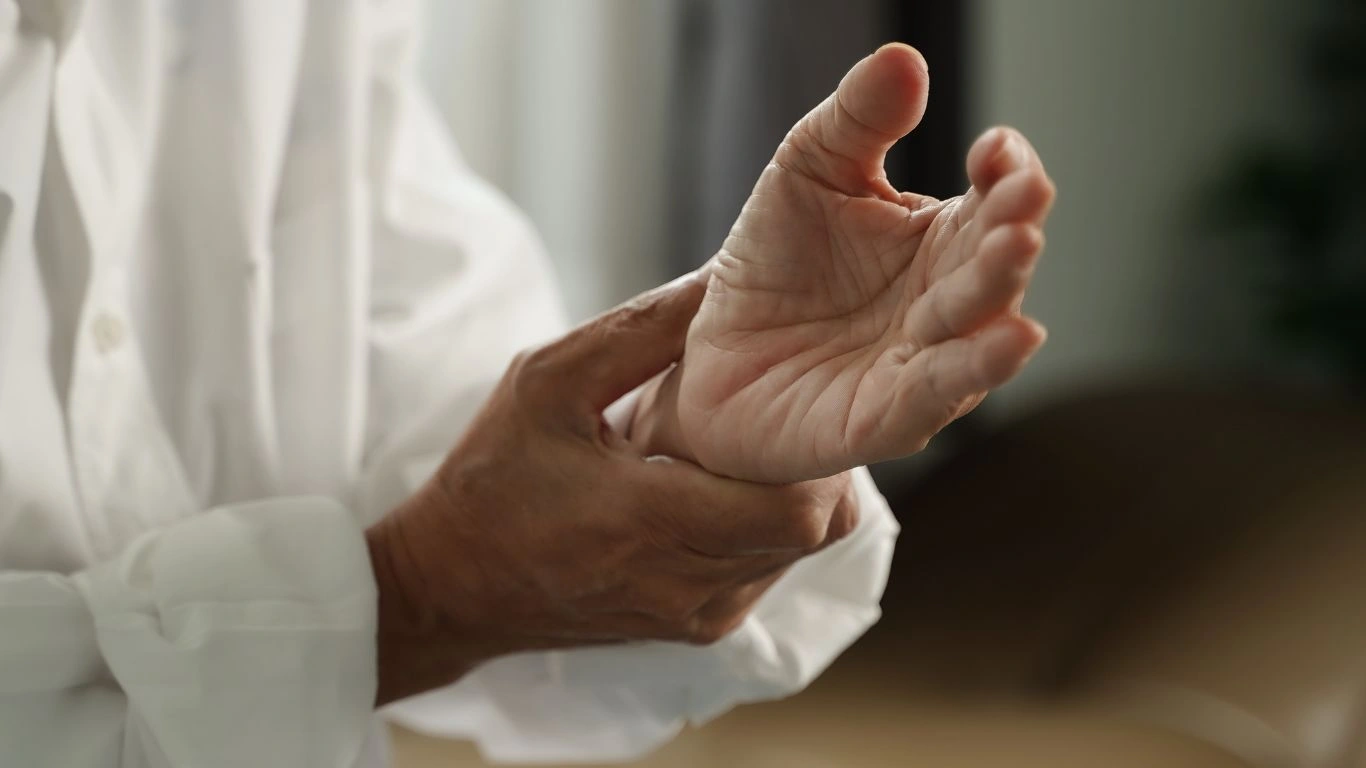Best Joint-Friendly Workout for Rheumatoid Arthritis: Safe & Effective Exercises
Living with rheumatoid arthritis (RA) can feel like a constant battle—one that affects not only your joints but also your overall well-being. As a Rheumatology nurse practitioner, I’ve seen firsthand how RA can hold people back from staying active. But here’s the thing: you don’t have to give up exercise entirely. In fact, staying active is crucial for managing RA symptoms and improving your quality of life. One of the most frequent questions I get from patients is, “What’s the best joint-friendly workout for rheumatoid arthritis?” And that’s exactly what we’re going to dive into today. So, if you’re struggling to figure out how to exercise without making your RA worse, you’ve come to the right place. Let’s explore how you can stay active while being mindful of your joints!
The Importance of Exercise for Rheumatoid Arthritis

Before we dive into specific exercises, let’s take a moment to understand why staying active is so important for RA management. RA is an autoimmune disorder that primarily affects the joints, causing inflammation, pain, and stiffness. Over time, this can lead to joint damage, muscle weakness, and limited mobility. That’s where exercise comes in. A regular exercise routine tailored to your condition can help with:
- Reducing inflammation: Regular movement helps decrease joint inflammation, reducing flare-ups.
- Increasing flexibility and mobility: Exercise helps maintain the range of motion in your joints, making it easier to perform daily activities.
- Improving strength: By strengthening the muscles around your joints, you can provide better support and protection.
- Boosting mood and mental health: Exercise has long been known to help with stress relief, and in people with RA, it can also help combat the mental fatigue that often accompanies chronic pain.
Of course, it’s important to approach exercise carefully when you have RA. Overdoing it or doing the wrong exercises can lead to more harm than good. The key is finding joint-friendly workouts that don’t exacerbate pain or inflammation. Let’s break it down and look at some of the best options.
Joint-Friendly Workouts to Try with Rheumatoid Arthritis
1. Swimming and Water Aerobics

When it comes to joint-friendly exercises, swimming and water aerobics are top choices. The buoyancy of the water supports your body, which takes the pressure off your joints while still allowing for a full-body workout. Swimming allows you to engage in cardiovascular exercise, improve strength, and enhance flexibility without putting strain on your joints.
In my practice, I’ve seen many patients with RA benefit greatly from water-based exercises. The resistance of the water also helps build muscle strength, which is crucial for supporting the joints. If you’re not a fan of swimming, water aerobics is a great alternative. Many local gyms offer water fitness classes designed for people with joint conditions, including RA.
2. Cycling

Cycling is another excellent joint-friendly exercise. Whether you’re using a stationary bike or cycling outdoors, the low-impact nature of cycling helps you build cardiovascular fitness and strength without overburdening your joints. The key is to maintain proper posture and ensure your bike is set up correctly to avoid unnecessary stress on your knees, hips, or lower back.
Personally, I’ve had patients tell me how much they enjoy cycling because it gives them a sense of freedom while staying active. It’s also a workout you can easily adjust to your fitness level—you can go at your own pace and gradually increase intensity as your endurance improves. So if you’re looking for a way to stay fit while minimizing joint pain, cycling is definitely worth considering.
3. Yoga and Tai Chi
Yoga and Tai Chi are both low-impact activities that emphasize flexibility, balance, and breathing. These practices can be incredibly beneficial for people with RA, as they help improve joint mobility, reduce stiffness, and promote relaxation. What’s great about yoga and Tai Chi is that they can be modified to suit your abilities, whether you’re a beginner or more advanced.
In my experience, patients with RA often see significant improvements in their pain levels and overall well-being after incorporating yoga or Tai Chi into their routine. I recommend looking for classes or online resources specifically designed for people with arthritis, as instructors can offer modifications to help protect your joints. Plus, these activities focus on mindfulness, which can reduce stress and contribute to a positive mental outlook.
4. Strength Training
Strength training might sound intimidating, but it’s actually an important part of any joint-friendly workout routine. By strengthening the muscles around your joints, you can help support them and prevent further damage. However, it’s crucial to use proper form and light weights (or even resistance bands) to avoid injury.
Many people with RA shy away from strength training because they’re worried it will cause more harm than good. But in reality, it can have a protective effect on your joints when done correctly. Start with low resistance and gradually increase the intensity as your strength improves. And remember, slow and controlled movements are key to preventing strain on your joints.
It’s also worth mentioning that before starting any strength training routine, it’s important to consult with your healthcare provider or a physical therapist who can guide you on appropriate exercises for your condition.
Is There Such a Thing as Overdoing It?
While exercise is essential for managing RA, it’s also important not to overdo it. Over-exercising or pushing through pain can lead to joint damage and exacerbated inflammation. Always listen to your body and stop if something doesn’t feel right.
In my practice, I’ve emphasized the importance of finding that sweet spot between staying active and giving your body the rest it needs. When you’re living with RA, balance is key. If you’re experiencing a flare-up, you might need to scale back on your workouts or opt for gentler activities like stretching or walking until the flare subsides. Don’t be afraid to modify your routine based on how you feel on any given day.
How to Safely Incorporate Exercise into Your Routine

When you’re living with rheumatoid arthritis, it’s not just about choosing the right exercises; it’s also about how you incorporate them into your routine. Taking a slow and steady approach is key to success. As someone who works with RA patients every day, I can’t stress enough how important it is to start small, listen to your body, and gradually build up your stamina. Overdoing it right out of the gate can set you back, and we certainly don’t want that!
If you’re new to exercising with RA, I recommend beginning with shorter sessions—15 to 20 minutes at a time—focusing on joint-friendly activities like swimming, gentle stretching, or a short walk. As you get more comfortable, you can increase the duration or intensity. But remember, progress doesn’t mean pushing through pain—it means gradually building up strength and stamina without exacerbating your RA symptoms.
One of the most common concerns I hear from my patients is the fear of flare-ups. It’s a real concern, but staying active can actually help reduce the frequency and intensity of flare-ups over time. However, it’s crucial to have a balance. For example, if you’re experiencing a flare-up, you might want to switch to gentler activities like stretching or focus on mindfulness practices instead of vigorous exercise. Always listen to your body, and don’t be afraid to modify your routine accordingly.
Choosing the Right Exercises for Your Stage of RA

The type of exercise you do should depend on your individual stage of rheumatoid arthritis. Not every day will be the same when it comes to how your joints feel. Some days will be better than others, so it’s important to adjust your workouts based on how your body is responding to your RA symptoms.
For instance, during periods of remission (when symptoms are less severe), you can gradually increase the intensity of your exercise routine. On days when you feel more pain or discomfort, you might need to scale back and focus on low-impact activities like walking, swimming, or gentle stretching. Some of my patients with RA prefer to use tools like resistance bands or light weights during their sessions to ensure that they aren’t overloading their joints while still engaging in strength training.
Another important consideration is the timing of your exercise. For those with RA, mornings can often be the stiffest time of day. If you’re one of those people who experiences joint stiffness and swelling in the morning, try gentle stretching or some light yoga when you first wake up. This can help loosen up the joints and ease the pain, setting you up for a better day overall. Evening workouts tend to be easier for those with RA as stiffness and pain may be less intense after you’ve been moving around for a while, but it’s all about finding what works for you!
Warm-Up and Cool-Down: Essential for RA
Warm-up and cool-down routines are non-negotiable when you’re managing RA. I can’t stress enough how important these steps are in preventing injury and minimizing flare-ups. A good warm-up increases blood flow to your muscles and joints, preparing them for more intense activity. Meanwhile, cooling down helps your body recover and reduces muscle stiffness.
For your warm-up, aim for 5 to 10 minutes of light cardio—things like walking at a comfortable pace, gentle cycling, or even low-impact dance. Afterward, take a few minutes to do dynamic stretches (think leg swings, arm circles, or torso twists) to get your joints moving and ready for action.
After your workout, be sure to cool down with static stretches. This could be as simple as holding a stretch for 20-30 seconds on each side. Stretching at the end of a workout is essential for maintaining flexibility, which is something that can be affected by RA. Stretching also helps keep the muscles and joints relaxed, reducing the chance of soreness and stiffness later.
Mindfulness and RA: Exercise and Mental Well-Being

Living with RA can often take a toll on your mental health. Dealing with chronic pain, inflammation, and the unpredictability of flare-ups can lead to feelings of frustration, anxiety, and even depression. Exercise, particularly mindfulness-based activities like yoga and Tai Chi, can help reduce these emotional stressors.
Yoga, for example, not only improves flexibility and strength but also incorporates elements of mindfulness, which can be incredibly beneficial for people with chronic conditions like RA. Focusing on your breath and being present in the moment helps reduce stress and calm the mind, providing a much-needed mental break. Tai Chi, often described as “meditation in motion,” has similar benefits. The slow, deliberate movements allow you to focus on your body and your breath, offering relief from both physical and mental tension.
When it comes to my patients who are dealing with both physical and mental stress from RA, I always recommend trying mindfulness-based exercises. Many have found them to be incredibly effective at reducing feelings of anxiety or frustration associated with their condition. And let’s be honest—when you’re less stressed, your body is more likely to feel relaxed, and that can translate into less pain and discomfort overall.
Another great option for incorporating mindfulness into your workout routine is simply taking a walk outside. Not only does walking promote joint health, but the act of stepping outside and breathing in fresh air is known to improve mood and mental clarity. You don’t have to go on a long hike—just a 10-minute stroll can be enough to shift your mindset and make you feel more at ease.
Working with Your Healthcare Team
As you explore different workouts and start building your exercise routine, it’s essential to stay in close communication with your healthcare team. Your rheumatologist or physical therapist can help you figure out the best approach to exercise based on your individual needs and condition.
In my experience, patients who regularly check in with their healthcare providers tend to do better in managing their RA. Your healthcare team can provide guidance on things like exercise intensity, frequency, and how to adjust for flare-ups. They can also help you modify exercises if you’re experiencing joint pain or stiffness during certain movements. Having this support ensures that you’re making choices that align with your health goals and reduces the risk of injury.
Remember, living with RA doesn’t mean you have to be sedentary. By finding the right joint-friendly exercises and integrating them safely into your routine, you can boost both your physical and mental well-being. The road might feel tough sometimes, but with the right tools and support, you can stay active, reduce pain, and live your life to the fullest!
Building a Sustainable Workout Routine for RA

Building a workout routine that you can sustain long-term is one of the most important steps when managing rheumatoid arthritis. It’s not about pushing yourself to the limits every single day—it’s about consistency and knowing when to rest. The good news is that with the right approach, exercise can become a seamless part of your daily routine without overwhelming you. In fact, it can become something you look forward to because it helps you feel better both physically and mentally!
Here’s something I’ve observed with many of my patients over the years: the best way to stay committed to an exercise routine is to find something that feels enjoyable. Exercise shouldn’t feel like a chore. Whether it’s taking a walk in the park, joining a low-impact aerobics class, or simply stretching on your yoga mat in the comfort of your own home, finding an activity you enjoy makes sticking with it that much easier. Plus, when you’re dealing with RA, having a bit of fun along the way is a great way to ease the tension that comes with chronic pain.
So, how can you create a sustainable workout routine that works for your RA? Let’s break it down:
- Start with small, manageable goals: If you’ve been sedentary for a while, don’t try to jump into intense workouts. Begin with short, low-impact sessions and gradually increase the time and intensity as your body allows. Aiming for consistency is more important than overdoing it at first.
- Mix up your exercises: The best joint-friendly workouts for rheumatoid arthritis are those that provide variety. This keeps things interesting and engages different muscle groups. Swimming, cycling, walking, yoga, and strength training (with light weights or resistance bands) are all great options to incorporate into your routine.
- Pay attention to your body: If you feel pain, stop and adjust your activity. RA can be unpredictable, so make sure you’re listening to your body’s cues. Exercise should never feel like you’re pushing through pain—just gentle effort is enough.
- Stay flexible: Some days, your joints might feel better than others. If you’re having a flare-up or experiencing significant stiffness, consider switching to gentler movements like stretching, walking, or a shorter yoga session instead of your usual workout.
With these tips, you can build a workout routine that fits within the ebbs and flows of living with rheumatoid arthritis. And remember, it’s perfectly okay to adjust your routine as needed. The goal isn’t perfection—it’s progress.
Nutrition and RA: Fueling Your Body for Better Joint Health

In addition to exercise, another crucial aspect of managing rheumatoid arthritis is proper nutrition. Eating the right foods can help reduce inflammation, improve your energy levels, and support your joints during your workouts. While diet alone won’t cure RA, it can certainly make a big difference in how you feel day-to-day.
One of the first things I recommend to my patients is focusing on anti-inflammatory foods. These foods help combat the inflammation that’s at the root of rheumatoid arthritis, giving you a natural boost alongside your exercise routine. Here are a few types of foods you might want to consider including in your diet:
- Omega-3 fatty acids: Found in fatty fish like salmon, sardines, and mackerel, omega-3s are known for their anti-inflammatory properties. If you’re not a fan of fish, flaxseeds, chia seeds, and walnuts are great plant-based sources.
- Fruits and vegetables: Rich in antioxidants, fruits and vegetables help reduce oxidative stress and inflammation in the body. Colorful options like berries, leafy greens, and bell peppers are especially beneficial.
- Whole grains: Unlike refined grains, whole grains like oats, brown rice, and quinoa provide fiber, which can help regulate inflammation and improve overall digestive health.
- Spices: Certain spices, like turmeric and ginger, are known for their powerful anti-inflammatory properties. Adding these to your meals can provide additional relief for your joints.
Additionally, it’s important to stay hydrated. Dehydration can exacerbate joint pain, so make sure you’re drinking plenty of water throughout the day, especially before and after workouts.
And just as you would pay attention to the types of foods you eat, it’s equally important to avoid those that could potentially worsen inflammation. Processed foods, excess sugar, and fried foods are known to increase inflammation, which could make your RA symptoms worse. While it’s not always realistic to cut them out entirely, try to minimize them where you can.
References and Further Reading
If you’re looking to dive deeper into the connection between exercise and rheumatoid arthritis, as well as additional strategies for managing your condition, there are some fantastic resources available. Here are a few websites to check out:
- Health.com – Provides excellent articles on managing chronic conditions like RA.
- National Institutes of Health (NIH) – Offers research and insights on the latest treatments and therapies for rheumatoid arthritis.
- Arthritis Foundation – A go-to resource for everything related to arthritis, including tips for exercise and managing flare-ups.
Disclaimer
The information provided in this article is intended for educational purposes only and should not be considered medical advice. Always consult with your healthcare provider before starting any new exercise program or making significant changes to your diet. Each individual’s health needs are unique, and your doctor can provide tailored advice based on your personal condition.

Tarra Nugroho is a dedicated Nurse Practitioner with a strong foundation in family and preventive care. She brings both compassion and clinical expertise to her practice, focusing on patient-centered care and health education. As a contributor to Healthusias.com, Tarra translates medical knowledge into clear, empowering articles on topics like women’s health, chronic disease management, and lifestyle medicine. Her mission is simple: help people feel seen, heard, and informed—both in the clinic and through the content she creates. When she’s not caring for patients, Tarra enjoys weekend hikes, plant-based cooking, and curling up with a good health podcast.






